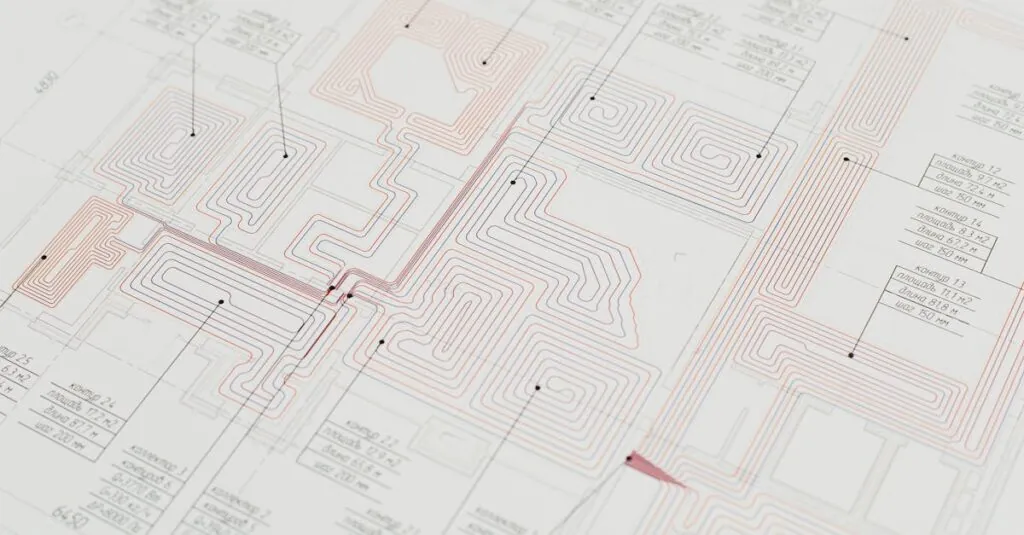In the vast universe of data management, the data warehouse architecture diagram is like a treasure map, guiding organizations to their hidden gems of insights. It’s not just a pretty picture; it’s the backbone of efficient data storage and retrieval. Without it, navigating through mountains of data can feel like searching for a needle in a haystack—blindfolded.
Imagine trying to build a house without a blueprint. Chaos, right? The same goes for data warehouses. A well-structured diagram not only simplifies complex data flows but also ensures that every byte finds its rightful place. So whether you’re a data novice or a seasoned pro, understanding this architecture is essential. Buckle up as we dive into the nitty-gritty of data warehouse architecture diagrams and discover how they can transform your data strategy from a jumble of ones and zeros into a well-oiled machine.
Overview of Data Warehouse Architecture
Data warehouse architecture lays the foundation for effective data management within organizations. Typically, it consists of several layers, each serving a specific purpose in the data processing lifecycle. Understanding these layers helps in creating efficient data storage and retrieval systems.
The bottom layer, known as the data source layer, contains various data sources, such as operational databases, external data feeds, and flat files. Data is extracted from these sources using processes called Extract, Transform, Load (ETL).
Above this, the staging layer temporarily stores data in its raw form. Cleansing and transformation occur here, ensuring that data meets the required standards before moving to the next layer. This process prevents inconsistencies that often lead to errors in analysis.
The core layer, or data warehouse layer, holds the cleansed and integrated data. This layer supports analytics and reporting, allowing users to query vast datasets efficiently. Structures such as star and snowflake schemas organize this data, facilitating faster retrieval times for analysis.
On top of this, the presentation layer provides a user-friendly interface for data access. Business intelligence tools connect to this layer, enabling users to create reports and dashboards. These visual representations make it easier for stakeholders to derive insights from the data.
Lastly, the data governance layer ensures compliance and security protocols are in place. This layer encompasses policies, procedures, and tools to manage data quality and access. By implementing effective governance, organizations protect their data assets and maintain confidentiality.
A well-designed data warehouse architecture promotes streamlined processes, enhances data accessibility, and supports informed decision-making across various business functions.
Key Components of Data Warehouse Architecture
Data warehouse architecture comprises essential components that ensure efficient data management and retrieval.
Data Sources
Data sources involve various databases, applications, and external feeds. They serve as the foundation for data extraction. Organizations integrate structured and unstructured data, ranging from CRM systems to social media platforms. These sources provide valuable information essential for analysis. Using Extract, Transform, Load (ETL) processes, data is extracted and prepared for further stages.
Data Integration
Data integration consolidates information from multiple sources, creating a unified view. ETL processes play a critical role here, cleansing and transforming raw data into a consistent format. Data mapping aligns different data schemas, ensuring compatibility among sources. Transformation rules standardize disparate datasets, enabling accurate analytics. Proper integration fosters a reliable environment for generating insights that drive decision-making.
Data Storage
Data storage entails utilizing various structures to manage integrated data. Typically, central repositories like relational databases or cloud storage solutions are employed. They ensure quick access and retrieval for analytical tasks. Dimensional modeling techniques are applied to organize data hierarchically, simplifying analysis. Adequate storage solutions accommodate growing data volumes while maintaining performance.
Data Presentation
Data presentation provides stakeholders with user-friendly access to information. Tools such as dashboards and reporting software display critical metrics visually. Organizations can customize reports to suit specific needs, fostering informed decision-making. Interactive interfaces allow users to explore data and glean insights effortlessly. Effective presentation enhances clarity, driving engagement among business users.
Types of Data Warehouse Architectures
Three primary data warehouse architectures exist: top-down, bottom-up, and hybrid. Each model serves unique business needs while supporting data integration and analytics.
Top-Down Approach
The top-down approach emphasizes the development of the data warehouse at a corporate level. Through this method, data is integrated from various operational systems into a central enterprise data warehouse. This architecture encourages consistency and quality across reports since data is processed uniformly. As stakeholders work with a centralized repository, they benefit from improved data governance and decision-making. Organizations like Teradata utilize this approach, enabling swift access to a single version of truth from their data.
Bottom-Up Approach
In contrast, the bottom-up approach prioritizes immediate needs and tactical solutions. It focuses on building data marts that serve specific departments or business units before integrating them into a larger data warehouse. This model allows organizations to deliver value quickly as departments receive insights tailored to their goals. Users gain flexibility since individual teams can customize data according to specific requirements. Eventually, these data marts consolidate into a more comprehensive solution, fostering better enterprise-level insight.
Hybrid Approach
The hybrid approach combines the top-down and bottom-up methods, providing a balanced framework for data management. This architecture allows organizations to develop data marts to fulfill immediate reporting needs while simultaneously building an enterprise data warehouse. Increased adaptability results from this approach as businesses can focus on quick wins while ensuring long-term data integration strategies. Organizations benefit from centralized governance along with departmental flexibility, allowing tailored insights across the enterprise.
Best Practices for Designing Data Warehouse Architecture
Effective data warehouse architecture design requires adherence to best practices that enhance functionality and flexibility. Start by clearly defining business requirements. Understanding the specific needs helps in choosing suitable data sources and integration methods.
Incorporate scalability and flexibility into the architecture. As organizational data needs change, the architecture must adapt easily. Employing a modular approach facilitates this adaptability, enabling future enhancements without disrupting current operations.
Utilize standardized naming conventions for data elements. This practice simplifies maintenance and improves collaboration among stakeholders. Establishing a repository for metadata also aids in tracking data lineage and enhances data governance efforts.
Choose the right ETL tools for data integration. Extraction, transformation, and loading processes significantly impact data quality. Prioritizing tools that streamline these processes ensures timely and accurate data availability, enhancing reporting capabilities.
Implement data quality checks throughout the ETL process. By validating data at each stage, organizations can prevent issues that may arise from incorrect or incomplete information. Regular audits on data can help maintain high quality standards.
Design for performance optimization. Consider indexing strategies and partitioning to enhance query performance. Efficient architecture supports quicker data access and improves reporting speed, benefiting decision-making processes.
Ensure robust security measures. Protecting sensitive data must align with compliance regulations and internal policies. Implementing role-based access control and encryption safeguards against unauthorized access.
By following these best practices, organizations can create a well-structured data warehouse architecture that promotes efficient data use and informed decision-making.
A well-structured data warehouse architecture is vital for organizations seeking to harness the power of their data. By understanding the components and layers involved in data processing, businesses can create a streamlined system that enhances data accessibility and supports effective decision-making.
Implementing best practices ensures that the architecture remains adaptable and scalable to meet evolving data needs. With the right approach, organizations can transform their data into valuable insights, driving growth and innovation. Embracing a thoughtful design in data warehouse architecture not only prevents chaos but also empowers stakeholders to make informed choices based on reliable data.





